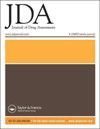Impact of a high-touch, collaborative, patient-centric, hepatitis C specialty clinical program on completion of glecaprevir/pibrentasvir therapy
IF 2.4
引用次数: 0
Abstract
Abstract Background: Hepatitis C (Hep C) is a liver infection caused by the Hep C virus. It is the most common, chronic, blood-borne infection in the US. It is estimated to affect as many as 3 million Americans and is the leading cause of liver transplants in the US. Hep C is often curable with newer antiviral therapy that is short in duration of treatment and more tolerable than traditional therapies. Aims: To measure the impact of a high-touch, specialty clinical program on driving therapy completion of glecaprevir/pibrentasvir in Hep C patients. Methods: This study was performed from a single center specialty pharmacy (SP). We evaluated patients initiating glecaprevir/pibrentasvir from February to March 2019. The outreach strategy included onboarding new-to-therapy patients by pharmacy technician specialists through the completion of a “Welcome Call”. The technician specialists determined the best time with every patient’s input for the pharmacist to follow up with a “New Start Pharmacist Initial Counseling Call”. A clinical pharmacist completed the Hep C counseling call. Afterward, a nursing refill reminder call was completed. Also, a “Patient Care Coordinator Refill Reminder Call” was coordinated to set up the shipment of the medication. After the patient completed their final refill, a nurse generated an “End of Therapy Call” to determine whether completion of therapy occurred. Results: Of the 46 patients managed by the SP, 44 patients received the cumulative days’ supply required to complete therapy. The SP had a 100% completion rate of therapy for the patients that were eligible to continue therapy. Two patients, due to allergic reactions, were not eligible to complete therapy. As such, this resulted in an overall completion rate of 96%. All patients received an initial counseling call. Thirty of the 46 patients received refill reminder calls from a nurse; 16 patients were not eligible for this call due to the patient reaching out to the pharmacy prior to the refill reminder call for their shipment, refill not applicable or allergies to the medication. Forty-four patients had end-of-therapy calls completed. Conclusions: A collaborative, high-touch SP, managing Hep C patients, drove a high rate of completion of glecaprevir/pibrentasvir Hep C therapy (100% of patients eligible). Specialty pharmacies that demonstrate improved Hep C completion rate outcomes with robust, coordinated care processes can be more confident in building future value-based reimbursement models with payers and pharmaceutical manufacturers.高接触、协作、以患者为中心的丙型肝炎专科临床项目对完成格列卡韦/皮布伦他韦治疗的影响
摘要背景:丙型肝炎是由丙型肝炎病毒引起的肝脏感染。它是美国最常见的慢性血源性感染。据估计,它影响了多达300万美国人,是美国肝移植的主要原因。丙型肝炎通常可以通过较新的抗病毒疗法治愈,这种疗法治疗时间短,比传统疗法更耐受。目的:测量高接触度、专业临床项目对丙型肝炎患者完成格列卡韦/皮布伦他韦治疗的影响。方法:本研究在一家单中心专业药房(SP)进行。我们评估了2019年2月至3月期间开始使用格列卡韦/皮布伦他韦的患者。外联战略包括通过完成“欢迎电话”,由药学技术专家为新的治疗患者提供服务。技术专家根据每位患者的意见确定最佳时间,让药剂师跟进“新起点药剂师初始咨询电话”。一位临床药剂师完成了丙型肝炎咨询电话。之后,完成了护理补充提醒电话。此外,还协调了“患者护理协调员补充提醒电话”,以安排药物的装运。在患者完成最后一次补充后,护士发出“治疗结束电话”,以确定是否完成了治疗。结果:在SP管理的46名患者中,44名患者获得了完成治疗所需的累计天数供应。对于有资格继续治疗的患者,SP的治疗完成率为100%。两名患者由于过敏反应,没有资格完成治疗。因此,这导致了96%的总体完成率。所有患者都接到了初步咨询电话。46名患者中有30人接到了护士打来的补充提醒电话;16名患者不符合此电话的资格,因为患者在重新填充提醒电话之前联系了药房,要求他们发货、重新填充不适用或对药物过敏。44名患者完成了治疗结束电话。结论:一个协作的、高接触的SP,管理丙型肝炎患者,推动了高完成率的格列卡韦/皮布伦他韦丙型肝炎治疗(100%符合条件的患者)。通过稳健、协调的护理流程,证明丙型肝炎完成率提高的专业药房可以更有信心与付款人和制药商建立未来基于价值的报销模式。
本文章由计算机程序翻译,如有差异,请以英文原文为准。
求助全文
约1分钟内获得全文
求助全文

 求助内容:
求助内容: 应助结果提醒方式:
应助结果提醒方式:


